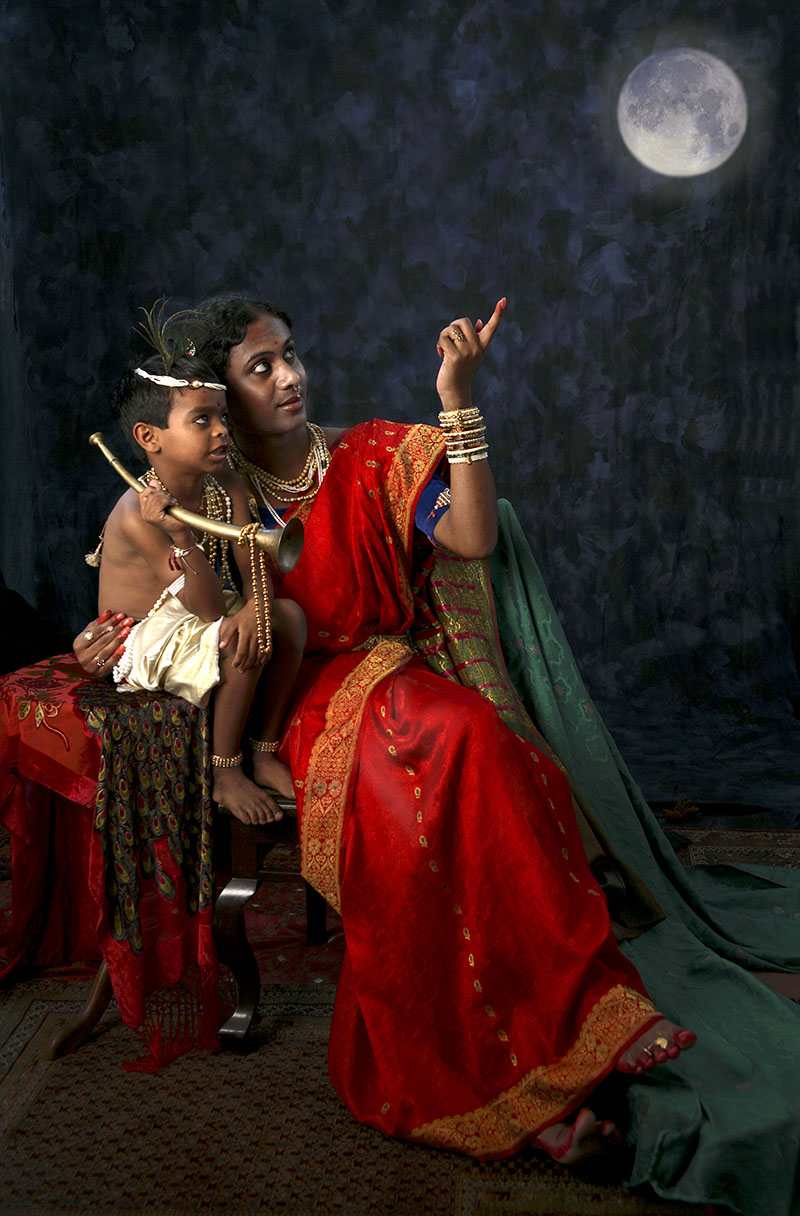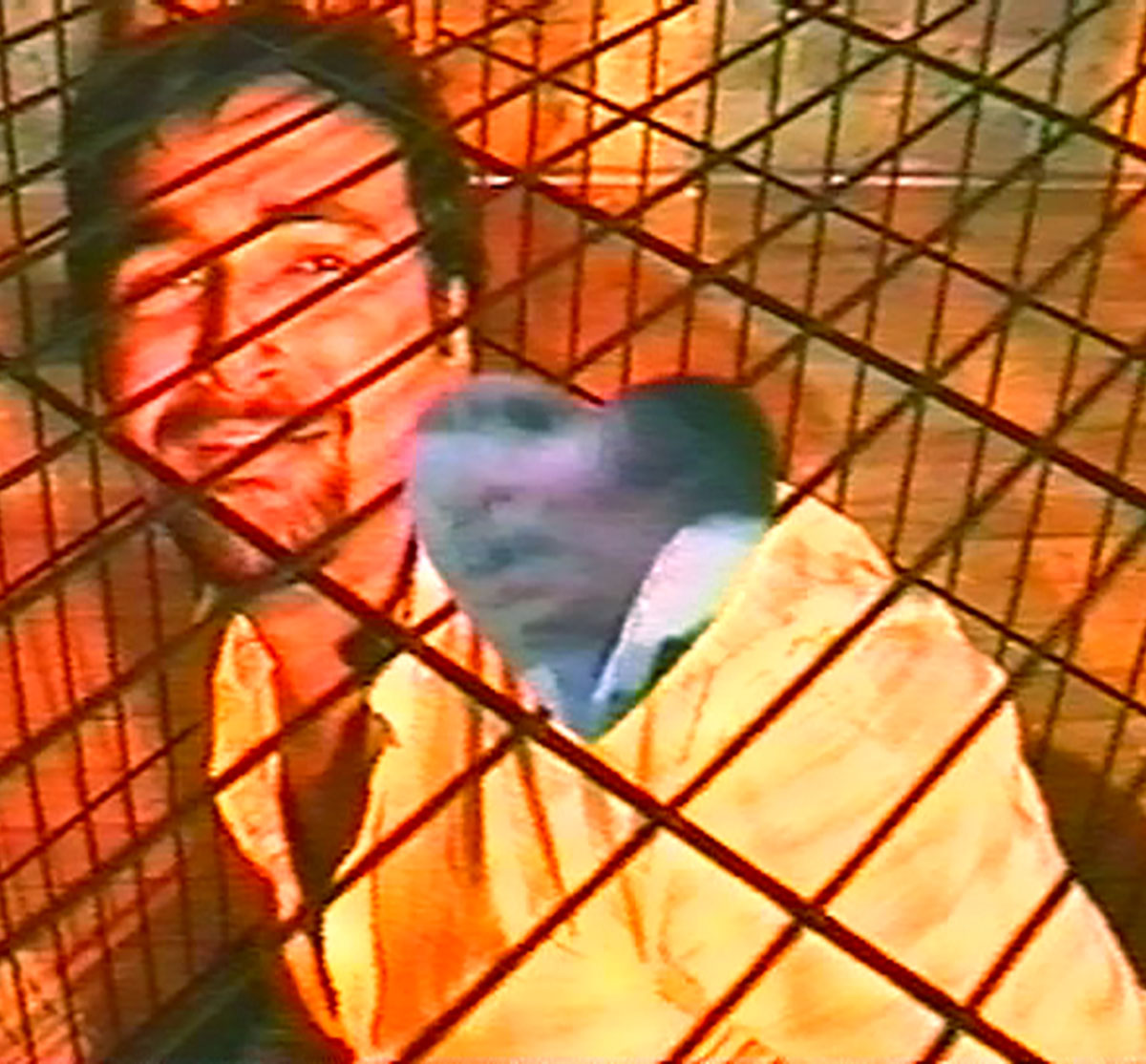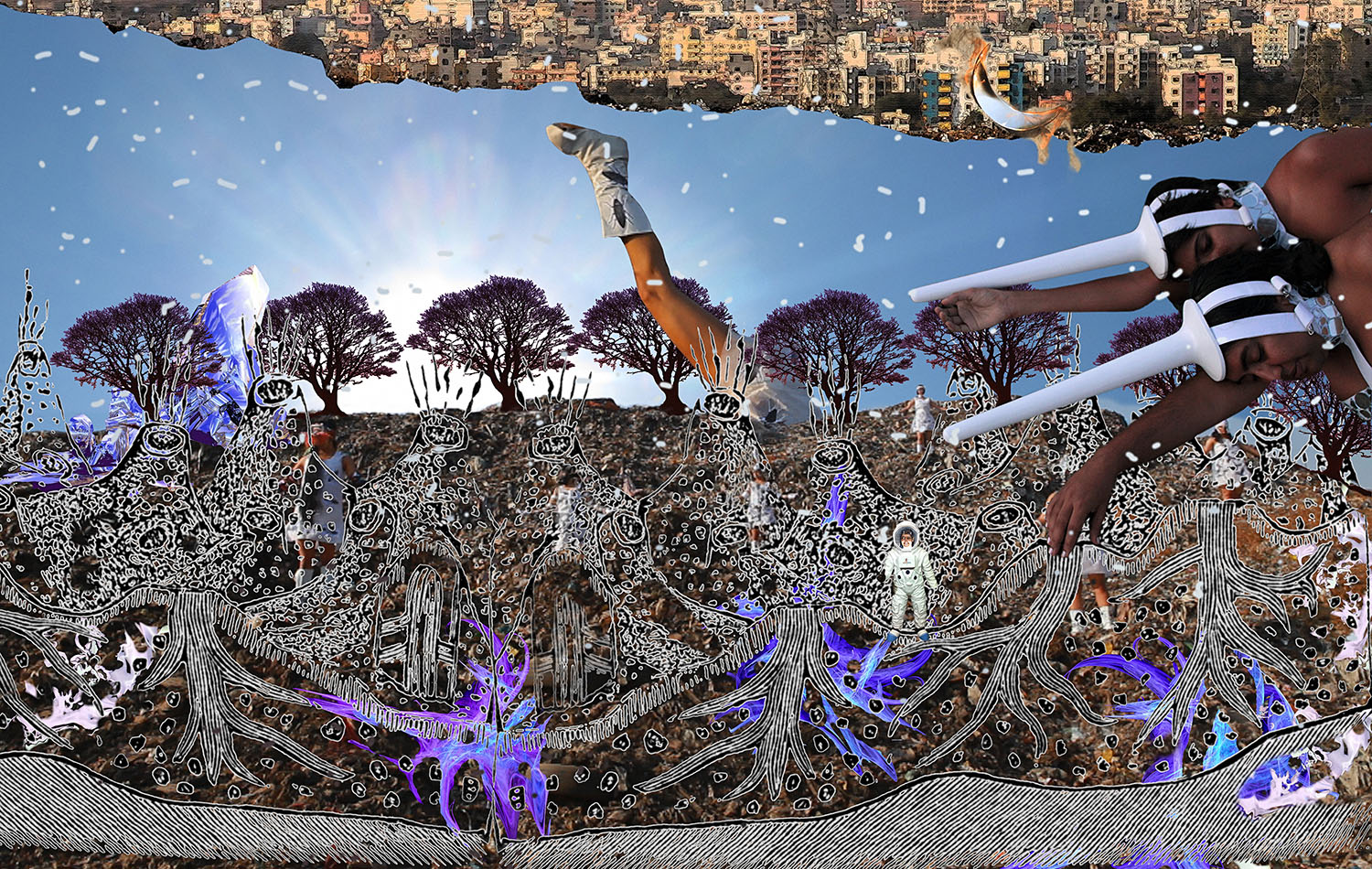ARTICLE
Tejal Shah
Shah’s work also spans film and video, and they often use tropes from Bollywood, primarily through subverting stereotypes and flipping gender roles with the aim of questioning predominant narratives in the industry. Their work Chingari Chumma/Stinging Kiss (2000), a single-channel, eight-minute film, shows the artist playing a male kidnapper while their male co-producer plays the damsel in distress, wearing a sari and beard. The hero of the film is actor Amitabh Bachchan, whose images are montaged from found footage.
Shah has exhibited their work at Gallery Pruss & Ochs, Berlin (2003); Galerie Mirchandani + Steinruecke, Mumbai (2006); Devi Art Foundation, New Delhi (2007); and Kashi Art Gallery, Kochi (2009), as well as in group shows at the Brooklyn Museum, New York; Tate Modern, London; Bodhi Art Gallery, Mumbai; and the Lalit Kala Akademi, New Delhi. They also received the 2009 Sanskriti Award for visual arts. Their work is currently part of a number of private collections across Australia and Germany.
At the time of writing, Shah lives and works in Goa.
Bibliography
Our website is currently undergoing maintenance and re-design, due to which we have had to take down some of our bibliographies. While these will be re-published shortly, you can request references for specific articles by writing to hellomapacademy@map-india.org.










